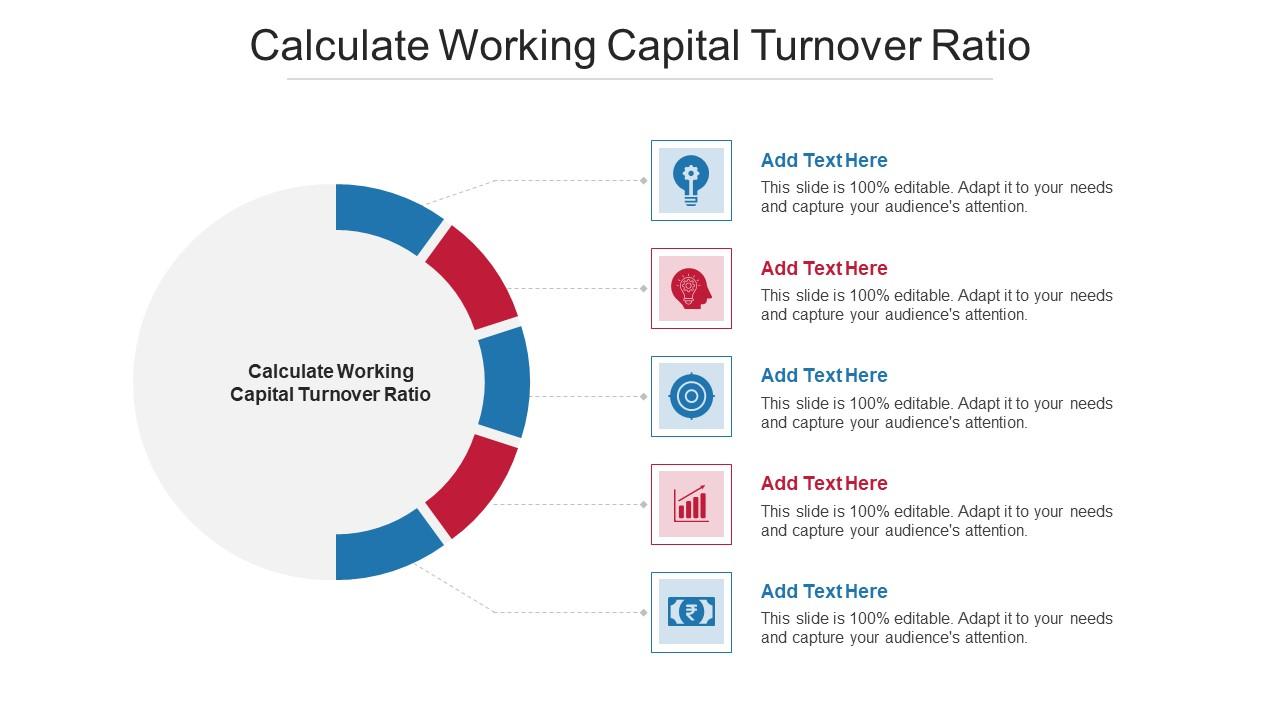

Finance
What Is Turnover In Accounting
Published: October 12, 2023
Learn about turnover in accounting and its significance in finance. Discover how this financial metric is calculated and why it is important for evaluating business performance.
(Many of the links in this article redirect to a specific reviewed product. Your purchase of these products through affiliate links helps to generate commission for LiveWell, at no extra cost. Learn more)
Table of Contents
Overview
In the world of finance and accounting, understanding key metrics and ratios is essential for evaluating the health and efficiency of a company. One such important metric is turnover, which plays a crucial role in accounting.
Turnover refers to the rate at which a company’s assets are being utilized or converted into sales. It provides insight into how effectively a company is utilizing its resources, managing its inventory, and generating revenue.
For businesses, turnover is a critical indicator of performance and productivity. It helps measure the efficiency of the company’s operations and its ability to generate sales from its assets or investments.
In accounting, turnover is commonly measured by calculating turnover ratios, which represent the relationship between specific accounts and the sales or total assets of a company. These ratios provide valuable information about the company’s ability to generate sales and manage its assets effectively.
Understanding turnover in accounting is not only important for companies but also for financial analysts, investors, and creditors. It helps them make informed decisions about the company’s financial health and its prospects for growth and profitability.
In this article, we will explore the definition of turnover in accounting, its importance, how to calculate turnover ratios, and the factors that can affect turnover. We will also provide some real-life examples to illustrate the concept and its practical application in the business world.
Definition of Turnover in Accounting
In accounting, turnover refers to the rate at which a company’s assets or inventory are converted into sales or revenue. It represents the efficiency and effectiveness of a company in utilizing its assets to generate revenue.
Turnover can be measured using various ratios, such as inventory turnover, accounts receivable turnover, and fixed asset turnover. These ratios provide insights into different aspects of the company’s operations and help identify areas of improvement or inefficiencies.
The most commonly used turnover ratio is the inventory turnover ratio. It measures how quickly a company sells its inventory or how frequently it replaces its inventory over a given period of time. A high inventory turnover ratio indicates that a company is effectively managing its inventory and generating sales, while a low ratio may suggest poor inventory management or sluggish sales.
The accounts receivable turnover ratio measures how efficiently a company collects payments from its customers. It shows the average number of times a company collects its accounts receivable during a specific time period. A high accounts receivable turnover ratio signifies that a company can quickly convert its credit sales into cash, while a low ratio may indicate credit collection issues or potential liquidity problems.
The fixed asset turnover ratio assesses how efficiently a company utilizes its fixed assets, such as property, plant, and equipment, to generate sales. It compares the net sales of a company with its average fixed assets. A high fixed asset turnover ratio suggests that a company is effectively using its fixed assets to generate revenue, while a low ratio may indicate underutilization or inefficiencies in asset utilization.
Overall, turnover in accounting provides valuable insights into a company’s operational efficiency and financial performance. By analyzing different turnover ratios, financial analysts and investors can assess how well a company is using its resources and generating revenue.
Importance of Turnover in Accounting
Turnover plays a crucial role in accounting as it provides valuable information about a company’s operational efficiency, financial performance, and ability to generate sales. Understanding the importance of turnover in accounting is essential for both companies and investors. Here are some key reasons why turnover is significant:
1. Measure of Efficiency: Turnover ratios help assess how effectively a company is utilizing its assets, such as inventory, accounts receivable, and fixed assets. A high turnover ratio indicates that a company is efficiently managing its resources and generating revenue. On the other hand, a low turnover ratio may suggest operational inefficiencies or underutilization of assets.
2. Inventory Management: Turnover ratios, specifically the inventory turnover ratio, provide insights into a company’s inventory management practices. By analyzing how quickly a company sells its inventory, management can optimize inventory levels, reduce carrying costs, and avoid obsolescence. Effective inventory management contributes to improved cash flow and profitability.
3. Cash Flow Management: Turnover ratios, such as accounts receivable turnover, are crucial for managing cash flow. A high accounts receivable turnover ratio indicates that a company is efficiently collecting payments from customers, resulting in a shorter cash conversion cycle. This allows companies to manage their working capital effectively and meet their financial obligations.
4. Financial Health Assessment: Turnover ratios provide important insights into a company’s financial health. Financial analysts and investors use these ratios to evaluate the company’s ability to generate sales, manage assets, and meet short-term and long-term financial goals. A strong turnover ratio indicates a well-performing company with growth potential, while a low ratio may raise concerns about the company’s operational efficiency.
5. Comparison and Benchmarking: Turnover ratios allow for benchmarking and comparison with industry peers. By comparing turnover ratios, companies can identify areas for improvement and adopt best practices from competitors. Investors can assess a company’s performance relative to its industry average and make informed investment decisions.
6. Decision-Making: Understanding turnover is crucial for making informed business decisions. It helps management identify strengths, weaknesses, and areas requiring attention. Whether it’s optimizing resource allocation, improving operational efficiency, or implementing pricing strategies, turnover analysis provides the necessary insights for effective decision-making.
Ultimately, turnover in accounting is a key metric for evaluating a company’s operational efficiency, financial performance, and ability to generate sales. By closely monitoring and analyzing turnover ratios, companies can identify opportunities for improvement, optimize resource utilization, and enhance overall financial health and performance.
Calculation of Turnover Ratio
In accounting, turnover ratios are calculated to measure the efficiency of a company in utilizing its resources and generating sales. There are different turnover ratios used for various accounts, such as inventory turnover, accounts receivable turnover, and fixed asset turnover. Let’s take a look at how these ratios are calculated:
1. Inventory Turnover Ratio: This ratio measures how quickly a company’s inventory is being sold or replaced over a specific time period. It is calculated by dividing the cost of goods sold (COGS) by the average inventory.
Inventory Turnover Ratio = COGS / Average Inventory
2. Accounts Receivable Turnover Ratio: This ratio assesses how efficiently a company collects payments from its customers. It is calculated by dividing net credit sales by the average accounts receivable.
Accounts Receivable Turnover Ratio = Net Credit Sales / Average Accounts Receivable
3. Fixed Asset Turnover Ratio: This ratio evaluates how effectively a company utilizes its fixed assets to generate sales. It is calculated by dividing net sales by the average value of the fixed assets.
Fixed Asset Turnover Ratio = Net Sales / Average Fixed Assets
It is important to note that the average inventory, accounts receivable, or fixed assets are used in these calculations in order to capture changes over a specific time period. The average value is calculated by adding the beginning and ending values and dividing by 2.
These calculations provide quantitative measures of the turnover ratios for different accounts, enabling businesses to assess their operational efficiency and performance. By comparing these ratios over time or against industry benchmarks, companies can gain valuable insights into their effectiveness in generating sales and managing assets.
Interpretation of Turnover Ratio
Turnover ratios are valuable metrics in accounting that provide insights into the efficiency and effectiveness of a company’s operations. Interpreting turnover ratios correctly is crucial for understanding a company’s financial health and identifying areas that require improvement. Here are some key points to consider when interpreting turnover ratios:
1. Inventory Turnover Ratio: A high inventory turnover ratio indicates that a company is efficiently selling its inventory and replenishing it regularly. This can be a positive sign of effective inventory management and strong sales. However, an extremely high ratio may suggest stockouts or limited product availability, which could impact customer satisfaction. On the other hand, a low inventory turnover ratio may indicate slow sales or excess inventory, potentially leading to storage costs and obsolete items.
2. Accounts Receivable Turnover Ratio: A high accounts receivable turnover ratio implies that a company is collecting payments from customers quickly, which is positive for cash flow and working capital management. It suggests efficient credit control and strong customer payment practices. Conversely, a low accounts receivable turnover ratio may signify difficulties in collecting payments, potential bad debts, or lenient credit terms. It could impact cash flow and liquidity and require improved credit management strategies.
3. Fixed Asset Turnover Ratio: A high fixed asset turnover ratio suggests that a company is generating significant revenue from its fixed assets, indicating efficient utilization and high productivity. It signifies optimal use of resources and cost-effective operations. Conversely, a low fixed asset turnover ratio may indicate underutilization of assets, inefficient operations, or inadequate sales. It could indicate the need to reassess asset allocation or explore opportunities to improve productivity and revenue generation.
When interpreting turnover ratios, it is essential to consider industry benchmarks, historical trends, and the company’s specific circumstances. Comparing the ratios against industry averages or competitors can provide insights into relative performance. Additionally, analyzing the trends over time can help identify improvements or deterioration in operational efficiency.
It is important to note that turnover ratios should not be analyzed in isolation but should be viewed in conjunction with other financial indicators, such as profitability, liquidity, and solvency ratios, to obtain a comprehensive understanding of a company’s financial position.
Overall, proper interpretation of turnover ratios assists in identifying areas of strength and weakness within a company’s operations. It enables financial analysts, investors, and management to make informed decisions, implement corrective actions, and drive improvements in operational efficiency and financial performance.
Factors Affecting Turnover
Turnover ratios in accounting can be influenced by various factors that impact a company’s operational efficiency, sales, and resource management. Understanding these factors is crucial for enhancing turnover and improving overall financial performance. Here are some key factors that can affect turnover:
1. Industry and Market Conditions: The industry in which a company operates plays a significant role in determining its turnover. Market demand, competition, and economic conditions can impact sales volume and customer behavior, affecting inventory turnover and accounts receivable turnover. Understanding market dynamics and adapting strategies accordingly is essential to navigate industry-specific challenges and optimize turnover.
2. Pricing and Sales Strategy: Pricing decisions and sales strategies can have a direct impact on turnover ratios. Pricing too high can result in slow sales, while aggressive discounts may impact profitability. Effective sales strategies, such as targeted marketing campaigns, bundle offers, or customer loyalty programs, can drive sales and increase turnover ratios. Finding the right balance between pricing, promotions, and value proposition is crucial for maximizing turnover.
3. Inventory Management: Efficient inventory management is vital for achieving high inventory turnover ratios. Factors such as accurate demand forecasting, optimal order quantities, reliable suppliers, and effective inventory control systems can impact the speed at which inventory is sold and replenished. Implementing just-in-time inventory practices or adopting technology-enabled inventory management solutions can improve turnover ratios and reduce carrying costs.
4. Credit Policies and Collection Efforts: Accounts receivable turnover ratios can be affected by credit policies and collection efforts. Offering lenient credit terms or extended payment periods may increase sales but also lead to delayed or non-payment. Implementing robust credit assessment procedures, clear payment terms, and proactive collection efforts can optimize accounts receivable turnover and enhance cash flow management.
5. Operational Efficiency: The efficiency of a company’s operations and processes directly impacts turnover. Streamlining operations, reducing production cycle times, optimizing production layouts, and enhancing supply chain management can improve overall productivity and accelerate turnover. Identifying inefficiencies and bottlenecks and implementing continuous improvement initiatives can lead to higher turnover ratios.
6. Customer Satisfaction and Repeat Business: Customer satisfaction plays a crucial role in driving sales and repeat business, ultimately impacting turnover. Providing excellent customer service, ensuring product quality, and building strong customer relationships can result in higher customer retention and increased sales. By understanding customer needs and preferences, companies can enhance product offerings and services, leading to improved turnover ratios.
It is important to note that the factors affecting turnover can vary depending on the industry, company size, and specific circumstances. Conducting regular analysis, monitoring market trends, and staying responsive to changes in the business environment are key to adapting strategies and optimizing turnover.
By addressing these factors and proactively managing them, companies can enhance their turnover ratios, improve financial performance, and gain a competitive edge in the market.
Examples of Turnover in Accounting
Turnover is a key concept in accounting that can be applied to various aspects of a company’s operations. Here are some examples of how turnover is used in accounting:
1. Inventory Turnover: Let’s consider a retail company that sells clothing. By analyzing their inventory turnover ratio, they can determine how quickly they are selling their inventory. If the cost of goods sold (COGS) for the year is $1 million, and the average inventory value is $200,000, then the inventory turnover ratio would be 5 times ($1 million / $200,000). This indicates that, on average, the company sells and replaces its inventory five times a year. A higher ratio would suggest faster turnover and more efficient inventory management.
2. Accounts Receivable Turnover: For a manufacturing company that extends credit to its customers, the accounts receivable turnover ratio is important. If the net credit sales for the year are $800,000, and the average accounts receivable is $200,000, then the accounts receivable turnover ratio would be 4 times ($800,000 / $200,000). This implies that, on average, the company collects its accounts receivable four times a year. A higher ratio indicates faster collection and efficient credit management.
3. Fixed Asset Turnover: Consider a construction company that uses heavy machinery and equipment. They can assess their fixed asset turnover ratio to evaluate how effectively they are utilizing their fixed assets to generate sales. If the net sales for the year are $2 million, and the average value of their fixed assets is $500,000, then the fixed asset turnover ratio would be 4 times ($2 million / $500,000). This suggests that, on average, the company generates $4 in sales for every dollar invested in fixed assets. A higher ratio indicates efficient utilization of fixed assets.
These examples highlight how turnover is calculated and used in accounting to evaluate different aspects of a company’s operations. By analyzing turnover ratios, companies can gain valuable insights into their efficiency, profitability, and resource management. It helps them make informed decisions, identify areas for improvement, and optimize their financial performance.
Conclusion
In conclusion, turnover is a fundamental concept in accounting that provides valuable insights into a company’s operational efficiency, financial performance, and resource management. Through various turnover ratios, including inventory turnover, accounts receivable turnover, and fixed asset turnover, businesses can assess their ability to generate sales and effectively utilize their assets.
Understanding the definition of turnover in accounting is essential for companies, financial analysts, and investors. It serves as a key performance indicator, helping companies identify areas for improvement and make informed business decisions. Turnover ratios provide insights into inventory management, cash flow management, and the efficient use of fixed assets, ultimately contributing to financial health and profitability.
Interpreting turnover ratios correctly is crucial for evaluating a company’s operational effectiveness. Comparing ratios over time, benchmarking against industry averages, and considering other financial indicators provide a comprehensive understanding of a company’s financial position and performance.
Several factors can influence turnover, including industry conditions, pricing strategies, inventory management, credit policies, operational efficiency, and customer satisfaction. Companies that proactively address these factors can enhance their turnover ratios, optimize resource utilization, and improve overall financial performance.
Real-life examples illustrate how turnover is applied in accounting, such as analyzing inventory turnover for a retail company, evaluating accounts receivable turnover for a manufacturing company, and assessing fixed asset turnover for a construction company. By analyzing these ratios, companies gain insights into sales efficiency, inventory management, and asset utilization.
In conclusion, turnover in accounting plays a pivotal role in assessing the efficiency and effectiveness of a company’s operations. By understanding and utilizing turnover ratios, businesses are empowered to make informed decisions, identify areas for improvement, and drive financial success.














